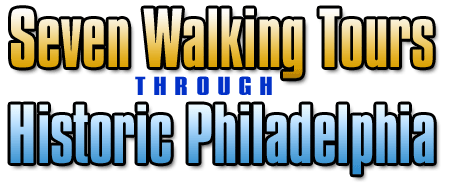Strawberry Mansion



Just a short distance north and west of Woodford Mansion, closer to the river, situated in a small park all its own and approached by a graceful drive, is Strawberry Mansion. The largest of the houses in the park, Strawberry was originally called Somerton and the first house was erected at this location about 1750. Somerton was owned by Charles Thomson (1729-1824), secretary of the Continental Congress, and known as the "Sam Adams of Philadelphia." When the British controlled Philadelphia in 1777, Sir William Howe ordered or permitted Somerton to be sacked and burned.
In 1798 William Lewis, President-Judge of the United States District Court of Pennsylvania, built the center section as Summerville and the wings were added in the mid-1820's by a subsequent owner. The present name stems from the time — after 1842 — when a Mrs. Grimes lived here and sold strawberries and cream to visitors. The furnishings of Strawberry Mansion are Federal, Regency and Empire, and one of the most charming pieces is a circular "chatting couch," or causeuse. The 1790 Clementi spinet, the Tucker china manufactured in Philadelphia, the 18th century Philadelphia pianoforte and a splendid old kitchen can't fail to captivate the visitor.
Strawberry's entrance hall is unusual in that four doors, with identical fanlights, open from it, two to the outside, two to other rooms. One bedroom is Empire — almost right out of one of Napoleon's palaces — with a rich canopied bed, ornate French over-valance at the window. Another has a "Beau Brummell" with handsome brasses, best described as the ultimate in a man's bureau for traveling, especially on a sea voyage. The attic is unbelievable. It is the attic dreamed of, but seldom seen, containing everything — a 1775 baby carriage, ice skates circa 1700 and 1800, metal hip tub, a doll house, an awesome array of doll, toys, kitchen utensils — everything but the kitchen sink.
To the east of the mansion is a major road called Ridge Avenue. Follow this north for about 3/4 of a mile to come to the next stop on the tour, Laurel Hill Cemetery
Fairmount Park
- Welcome to Fairmount Park
- Joan of Ark
- Fountain of the Sea Horses
- John Paul Jones
- Waterworks
- Lincoln Monument
- Lemon Hill
- Boathouse Row
- Icelandic Sculpture
- Garfield by Saint-Gaudens
- Samuel Memorial
- Playing Angels statue
- Grant Statue
- Mount Pleasant
- Remington's Cowboy
- Smith Playground
- Woodford
- Strawberry Mansion
- Laurel Hill Cemetery
- Zoo
- Sweetbriar
- Cedar Grove
- Memorial Hall
- Smith Civil War Memorial
- Japanese House (Shofuso)


